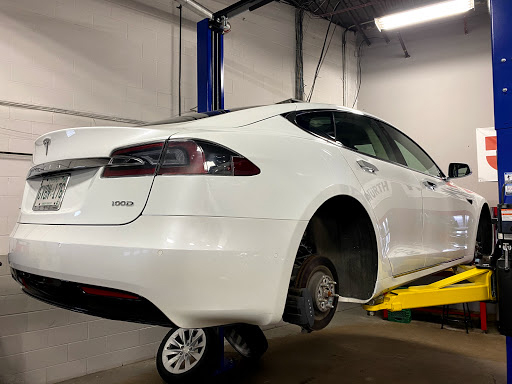
How to Troubleshoot a Car That Won’t Start (Even with a New Battery)
You’ve just replaced your car battery, expecting smooth starts and no more headaches. But the next morning, you turn the key—and nothing happens. A car that won’t start even with a new battery is one of the most frustrating issues Mississauga drivers face, especially when it strikes before work, school runs, or weekend plans.
The good news is that a dead battery isn’t the only explanation, and many causes can be diagnosed with a little know-how. In this guide, we’ll walk through the most common reasons your car refuses to start, how to troubleshoot the problem, and when it’s time to call a trusted Mississauga auto repair shop.
What you’ll learn:
The most common causes of a no-start issue after replacing the battery
A step-by-step troubleshooting guide you can follow at home
Frequently asked questions answered in clear, practical language
Local advice on when to bring your car in for professional repair
Why a Car May Not Start Even with a New Battery
When the battery isn’t the problem, the culprit usually lies elsewhere in the starting or ignition system. Let’s look at the most common causes.
1. Loose or Corroded Battery Connections
Even a new battery won’t help if the terminals are dirty or loose. Corrosion builds up quickly in Canadian winters and can prevent electricity from flowing properly.
2. Faulty Starter Motor
The starter is what physically cranks your engine. If it’s worn or broken, you may hear a clicking sound when you turn the key but the engine won’t turn over.
3. Alternator Issues
The alternator charges your battery while you drive. If it fails, your new battery may drain within hours, leaving you stranded again.
4. Ignition Switch Problems
If the ignition switch is faulty, the signal to start the car never reaches the starter. Symptoms often include dashboard lights not coming on when you turn the key.
5. Fuel System Failures
No matter how good your battery is, your car needs fuel to run. A clogged fuel filter, bad fuel pump, or empty tank can mimic electrical problems.
6. Electrical or Sensor Faults
Modern cars rely on dozens of sensors and relays to function properly, and a failure in any of these components can prevent the vehicle from starting—often without any obvious symptoms. Several issues can cause this problem. Loose or dirty connections may result in the car being completely dead or only working intermittently. A failed starter motor typically causes a clicking noise but no engine crank. If the alternator fails, the car might start but then quickly die. Problems with the ignition switch can lead to a lack of dashboard lights and no response when turning the key. Fuel system issues usually result in the engine cranking without actually starting. Finally, faults in sensors or electrical components can trigger warning lights or error codes, indicating an underlying problem.
Step-by-Step Troubleshooting Guide
Here’s a practical process Mississauga drivers can follow when the car won’t start after a new battery installation.
Step 1: Check Battery Connections
Make sure the terminals are tight and free of corrosion.
Use a wire brush or terminal cleaner if buildup is visible.
Step 2: Listen for Sounds
A clicking sound means the starter may be bad.
Silence could point to the ignition switch or a loose connection.
Step 3: Inspect the Alternator
If your car started yesterday but won’t today, the alternator may not be charging.
A dimming dashboard or flickering lights while driving are common warning signs.
Step 4: Look at Dashboard Lights
If no lights appear when you turn the key, the ignition switch or fuse could be faulty.
If the check-engine light stays on, a diagnostic scan is needed.
Step 5: Check the Fuel System
Confirm there’s fuel in the tank.
If the engine cranks but doesn’t start, the fuel pump or filter could be the issue.
Step 6: Run a Diagnostic Scan
Many Mississauga auto repair shops offer quick code scans.
This can identify faulty relays, sensors, or computer issues that aren’t obvious.
Frequently Asked Questions
Why won’t my car start after installing a new battery?
Because the problem is often unrelated to the battery itself. The starter, alternator, ignition switch, or fuel system are common culprits.How do I know if it’s the starter or the battery?
If you hear rapid clicking when you turn the key, the battery is usually fine but the starter is failing. If you hear nothing, check the ignition switch or wiring.Can a car run with a bad alternator?
Only briefly. The alternator charges the battery while driving. If it fails, the car will die once the battery’s charge is depleted.What should I do if my car cranks but won’t start?
This usually points to a fuel or ignition problem. Check for fuel, spark, and compression—or bring it in for a professional diagnostic.Is it safe to jump-start a car with a new battery?
Yes, but if your car still won’t start after a jump, it’s time to inspect the starter, alternator, or ignition system.
Conclusion
When your car won’t start even with a new battery, it’s rarely just bad luck—it’s a sign another part of the starting system is failing. Loose connections, bad starters, alternator issues, or faulty fuel systems are all common causes.
Mississauga drivers can do a few quick checks at home, but for complex issues, a trusted local repair shop can save you time and frustration.
What to do next:
Double-check your battery connections and listen for sounds when you turn the key
Look for signs of alternator or ignition issues
If the problem persists, book a diagnostic with a Mississauga auto repair expert
Need expert help today? Contact Skyline Automotive Service in Mississauga to schedule an inspection or repair appointment.